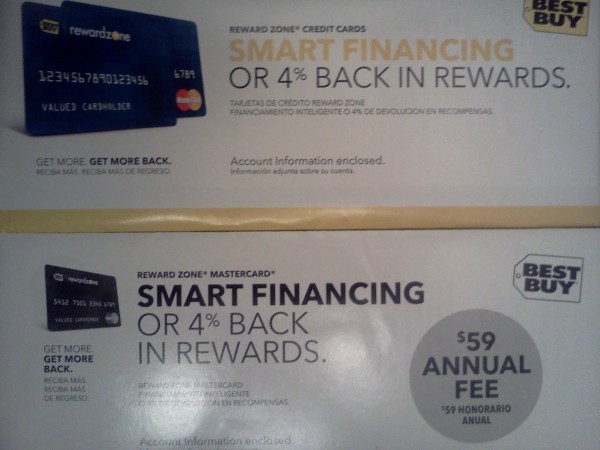We stopped by Best Buy last night. Laid out on a table were batches of credit card apps. As you can see from the picture, there were two varieties laid side by side:
Both of them appear to be the same card. Both offer 4% back in Best Buy rewards. Both have similar marketing language. But there’s one difference: one envelope shows a $59 annual fee while the other does not.
What, you ask, is the difference between the two? That is a great question, and it is one which apparently no one at either Capital One (the card issuer) or Best Buy has thought to ask because we still cannot figure it out.
The no-fee version is called “The Reward Zone Credit Card” and its brochure has the offer number 0826 on it. The annual fee version is called “The Reward Zone MasterCard Credit Card” and has the offer number 5852. The one big difference we can tell is that the annual fee version lists balance transfer fees, while the no-fee version doesn’t mention them at all. The Best Buy credit card website lists only one flavor of card.
What is going on here? Our best guess is that Cap One has an annual fee version of this card for subprime customers. We use the term “subprime” loosely here; we use it to mean “anybody below whatever credit criteria Capital One has in mind, though darned if anybody knows what those are.”
There is nothing wrong with having different versions of your card for people with different credit criteria. What’s mystifying about this is the total lack of clarity about who qualifies for what card, or even what each card is intended for. It’s lousy marketing that provides a confusing customer experience, and both Capital One and Best Buy ought to be ashamed of themselves.

Recent Comments